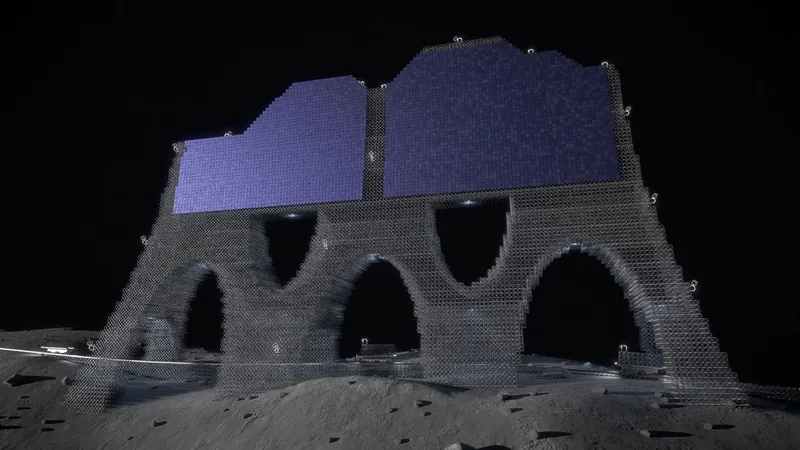
Revolutionary 'Metamaterials' Inspired by Nature Set to Transform Space Exploration!
2024-12-30
Author: Emma
Introduction
In a stunning breakthrough inspired by the intricate designs found in nature, scientists are developing innovative flexible materials known as metamaterials that could change the way we construct space habitats and telescopes. These remarkable materials have the potential to reshape themselves on command, offering unprecedented functionality for future space missions.
Nature's Inspiration
Much like how living organisms develop intricate structures from simple, repeating patterns—often seen in disorganized lattices of bones or coral—engineers are striving to imitate this flexibility in human-engineered materials. In biological systems, although individual components may seem weak, their collective strength can support enormous weights and adapt to varying conditions. For instance, the combined strength of bone cells allows for the support of massive wildlife, even though a single cell lacks that capability.
Metamaterials
Drawing from this concept, researchers are exploring the realm of metamaterials, which are capable of altering their shapes or properties through simple external forces such as compression or electrical impulses. This capability is especially beneficial for space applications, as it would allow astronauts to deploy materials that could assemble and reconfigure themselves without the need for spacecraft to be burdened with complex, heavy structures.
Totimorphic Lattice
A groundbreaking example of such metamaterials is the totimorphic lattice, a design that embodies a triangular structure with unique mechanics. The system consists of fixed beams connected through ball joints, springs, and arms, allowing the assembly of multiple units to morph into various shapes with remarkable agility and minimal effort. This characteristic could make it possible to design adaptable structures capable of catering to the fluctuating needs of space missions.
Recent Advances
Recently, researchers from the European Space Agency's Advanced Concepts Team achieved significant progress in transitioning the concept of totimorphic lattices from theory to practical application. A critical challenge they faced was ensuring that these structures could reconfigure themselves without entanglement, all while optimizing the transformation process.
Innovative Applications
Their groundbreaking study included two fascinating examples. The first one involved the development of a modular habitat structure capable of altering its shape and rigidity, which could easily adapt based on the needs of future astronauts exploring distant planets. Envision a scenario where astronauts can deploy the same material and morph it into various functional modules tailored for different purposes, all while conserving valuable space and resources.
In the second example, a flexible space telescope design utilizes these versatile lattices, allowing it to adjust its focal length by changing the curvature of its lens. Imagine launching a single, multipurpose telescope capable of fine-tuning its observations for various celestial targets—an innovation that could revolutionize astronomical research and exploration.
Conclusion
While these advancements are still in the early theoretical stages, their implications for humanity's future in space are monumental. The cost of launching materials into orbit is a significant barrier for space exploration, making the development of flexible, easily deployable structures a top priority.
As further research progresses, it becomes clear that these metamaterials could one day allow us to send simpler payloads into space, paving the way for grander ambitions, like building dynamic habitats on Mars or launching telescopes that can adapt instantly to the mysteries of the universe. The future of space exploration hinges on these extraordinary innovations!



 Brasil (PT)
Brasil (PT)
 Canada (EN)
Canada (EN)
 Chile (ES)
Chile (ES)
 Česko (CS)
Česko (CS)
 대한민국 (KO)
대한민국 (KO)
 España (ES)
España (ES)
 France (FR)
France (FR)
 Hong Kong (EN)
Hong Kong (EN)
 Italia (IT)
Italia (IT)
 日本 (JA)
日本 (JA)
 Magyarország (HU)
Magyarország (HU)
 Norge (NO)
Norge (NO)
 Polska (PL)
Polska (PL)
 Schweiz (DE)
Schweiz (DE)
 Singapore (EN)
Singapore (EN)
 Sverige (SV)
Sverige (SV)
 Suomi (FI)
Suomi (FI)
 Türkiye (TR)
Türkiye (TR)
 الإمارات العربية المتحدة (AR)
الإمارات العربية المتحدة (AR)